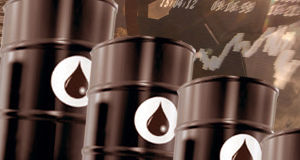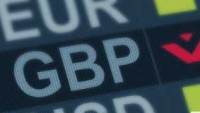 European markets underwent their worst weekly losses since March 2020 last week, as Russia’s reckless military actions in Ukraine, as well as the irrational behaviour of President Putin pushed the DAX to its lowest levels in over a year, with further falls likely to follow.
European markets underwent their worst weekly losses since March 2020 last week, as Russia’s reckless military actions in Ukraine, as well as the irrational behaviour of President Putin pushed the DAX to its lowest levels in over a year, with further falls likely to follow.
It’s hard to see much in the way of significant upside for stock markets now against a backdrop of continued escalation and raise the question of how much further Putin is prepared to go to achieve his goals.
With little sign that he is inclined to back down, pushing up against the stubbornness of Ukrainian forces in acquiescing to his demands, investors are likely to find themselves tested further in the coming days, with the only certainty being more volatility.
These tests for markets are likely to cover scenarios from Russia adopting a scorched earth policy, to further atrocities against civilians, to threats of nuclear escalation, when it becomes apparent that he won’t achieve his goals quickly, and in the process ensuring that Russia slowly turns into the North Korea of Europe.
This in turn is likely to mean that sanctions will fall on oil and gas imports from Russia, with reports at the weekend suggesting that the US is open to the prospect of a total ban on Russian oil, although Europe is more reluctant given its heavier reliance on Russian energy imports.
Nonetheless this news has prompted oil prices to surge even further this morning sending Brent crude prices above $130 a barrel and in turn seen markets in Asia slide sharply as concerns over demand destruction and a global recession increase.
Consequently we look set to see markets here in Europe come under further pressure this morning with further sharp declines.
There have also been continued calls for a no-fly zone to be implemented in Ukrainian airspace to counter Russian aerial attacks, a move which NATO has consistently pushed back against, and to which Putin said would be tantamount to an act of war. It would certainly be viewed as a significant escalation, and concerns about nuclear weapons notwithstanding, it would also put all of the refugees on Ukraine’s western borders in harm’s way, bringing the front line of the conflict onto Polish, Hungarian, and Romanian soil, which would be the last thing NATO or those countries need right now.
The damage being done to the Russian economy is already making itself felt with global companies pulling out en-masse, with American Express being the latest US financial services company to suspend its operations in the country following in the footsteps of Visa and Mastercard, while Netflix and TikTok also joined the exodus.
To mitigate the horror stories coming out of Ukraine, authorities in Russia are already frantically clamping down on independent media to manage the message as to why the currency is collapsing and prices are surging in the shops.
It is these concerns over slowing growth across the world, as well as surging commodity price inflation that is also acting as a headwind for stock markets more broadly and is the biggest challenge facing central banks all over the world, starting with the European Central Bank later this week.
While the outlook for economic growth has darkened, the picture for inflation is even worse as energy and agricultural commodity prices have soared since the start of the year, and this toxic cocktail poses a huge problem for central banks. Do they tighten monetary policy and risk pushing the world into a recession even quicker, or do they allow inflation to rip even higher, which would do the same thing. This week’s US CPI numbers for February are set to highlight this problem even more starkly.
If there is a silver lining coming out of all of this it’s that the labour market, not only in the US, but in the UK and Europe continues to look fairly resilient, even as consumer incomes get set to be squeezed further.
Friday’s US payrolls report was almost a footnote, despite coming in much better than expected, with 678k new jobs added in February, while the unemployment rate fell to 3.8%. What was even more encouraging was the participation rate rose to 62.3% up from 62.2% in January, however the wages numbers were disappointing, as average hourly earnings slid back sharply from 5.5% in January to 5.1%.
EUR/USD – continued to slide last week, pushing below 1.0980 and looks set to fall further towards 1.0820, where we have trend line support from the 2016 lows at 1.0340. Resistance comes in at 1.0980 and the 1.1080 area.
GBP/USD – looks to be heading back to the December lows at 1.3160, with a break below targeting a potential move towards 1.2850. Resistance remains back at the 1.3450 area.
EUR/GBP – slid back to the 0.8230 area and the lowest level since June 2016 last week and looks set to fall further towards the 0.8000 level. Resistance remains back near the 0.8410/20 area, and while below further weakness seems likely.
USD/JPY – last week’s inability to push above the 115.80 area has seen the US dollar slide back. A break below support at the 114.40/50 area opens up the risk of a move towards 113.80.













